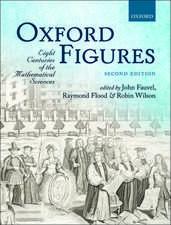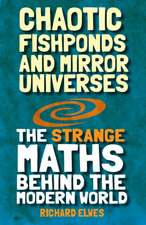One Hundred Prisoners and a Light Bulb
Autor Hans van Ditmarsch, Barteld Kooi Ilustrat de Elancheziyanen Limba Engleză Paperback – 21 iul 2015
At first glance, this riddle may seem impossible to solve: how can all of the necessary information be transmitted by the prisoners using only a single light bulb? There is indeed a solution, however, and it can be found by reasoning about knowledge.
This book provides a guided tour through eleven classic logic puzzles that are engaging and challenging and often surprising in their solutions. These riddles revolve around the characters’ declarations of knowledge, ignorance, and the appearance that they are contradicting themselves in some way. Each chapter focuses on one puzzle, which the authors break down in order to guide the reader toward the solution.
For general readers and students with little technical knowledge of mathematics, One Hundred Prisoners and a Light Bulb will be an accessible and fun introduction to epistemic logic. Additionally, more advanced students and their teachers will find it to be a valuable reference text for introductory course work and further study.
Preț: 107.81 lei
Nou
Puncte Express: 162
Preț estimativ în valută:
20.63€ • 21.59$ • 17.17£
20.63€ • 21.59$ • 17.17£
Carte disponibilă
Livrare economică 10-24 martie
Preluare comenzi: 021 569.72.76
Specificații
ISBN-13: 9783319166933
ISBN-10: 331916693X
Pagini: 189
Ilustrații: IX, 188 p. 24 illus.
Dimensiuni: 155 x 235 x 15 mm
Greutate: 0.29 kg
Ediția:1st ed. 2015
Editura: Springer International Publishing
Colecția Copernicus
Locul publicării:Cham, Switzerland
ISBN-10: 331916693X
Pagini: 189
Ilustrații: IX, 188 p. 24 illus.
Dimensiuni: 155 x 235 x 15 mm
Greutate: 0.29 kg
Ediția:1st ed. 2015
Editura: Springer International Publishing
Colecția Copernicus
Locul publicării:Cham, Switzerland
Public țintă
Popular/generalCuprins
Consecutive numbers.- Hangman.- Muddy Children.- Monty Hall.- Russian Cards.- Who Has the Sum?- Sum and Product.- Two Envelopes.- One Hundred Prisoners and a Light Bulb.- Gossip.- Cluedo.- Overview Dynamic Epistemic Logic.- Answers.
Recenzii
“This book, translated from the Dutch original, presents eleven problems of this kind, and develops the theory of dynamic epistemic logic to show how they can be solved. The puzzles, and book, are fun. … this is an illuminating and entertaining account of these puzzles (and tells us something of their history). If you enjoyed Cheryl’s birthday puzzle, you will like this book.” (Tony Mann, London Mathematical Society Newsletter (LMS), newsletter.lms.ac.uk, Issue 463, November, 2016)
“This book can be perfectly well used as a textbook for graduate students who have an interest in (dynamic) epistemic logic. At the same time, it is accessible to anyone … fascinated by this type of puzzle. For them it will be a nice way to enter the curious world of formal logic and see an amusing and entertaining puzzle transformed into a logical and significant problem about knowledge and its peculiarities.” (Jean Paul Van Bendegem, Mathematical Reviews, April, 2016)
“This book can be perfectly well used as a textbook for graduate students who have an interest in (dynamic) epistemic logic. At the same time, it is accessible to anyone … fascinated by this type of puzzle. For them it will be a nice way to enter the curious world of formal logic and see an amusing and entertaining puzzle transformed into a logical and significant problem about knowledge and its peculiarities.” (Jean Paul Van Bendegem, Mathematical Reviews, April, 2016)
Notă biografică
Hans van Ditmarsch, PhD, is a senior researcher at LORIA, CNRS - Universite de Lorraine.
Barteld Kooi, PhD, is Professor by special appointment of logic and argumentation theory at the University of Groningen.
Barteld Kooi, PhD, is Professor by special appointment of logic and argumentation theory at the University of Groningen.
Textul de pe ultima copertă
A group of 100 prisoners, all together in the prison dining area, are told that they will be all put in isolation cells and then will be interrogated one by one in a room containing a light with an on/off switch. The prisoners may communicate with one another by toggling the light switch (and that is the only way in which they can communicate). The light is initially switched off. There is no fixed order of interrogation, or interval between interrogations, and the same prisoner may be interrogated again at any stage. When interrogated, a prisoner can either do nothing, or toggle the light switch, or announce that all prisoners have been interrogated. If that announcement is true, the prisoners will (all) be set free, but if it is false, they will all be executed. While still in the dining room, and before the prisoners go to their isolation cells (forever), can the prisoners agree on a protocol that will set them free?
At first glance, this riddle may seem impossible to solve: how can all of the necessary information be transmitted by the prisoners using only a single light bulb? There is indeed a solution, however, and it can be found by reasoning about knowledge.
This book provides a guided tour through eleven classic logic puzzles that are engaging and challenging and often surprising in their solutions. These riddles revolve around the characters’ declarations of knowledge, ignorance, and the appearance that they are contradicting themselves in some way. Each chapter focuses on one puzzle, which the authors break down in order to guide the reader toward the solution.
For general readers and students with little technical knowledge of mathematics, One Hundred Prisoners and a Light Bulb will be an accessible and fun introduction to epistemic logic. Alternatively, more advanced students and their teachers will find it to be a valuable reference text for introductory course work and further study.
At first glance, this riddle may seem impossible to solve: how can all of the necessary information be transmitted by the prisoners using only a single light bulb? There is indeed a solution, however, and it can be found by reasoning about knowledge.
This book provides a guided tour through eleven classic logic puzzles that are engaging and challenging and often surprising in their solutions. These riddles revolve around the characters’ declarations of knowledge, ignorance, and the appearance that they are contradicting themselves in some way. Each chapter focuses on one puzzle, which the authors break down in order to guide the reader toward the solution.
For general readers and students with little technical knowledge of mathematics, One Hundred Prisoners and a Light Bulb will be an accessible and fun introduction to epistemic logic. Alternatively, more advanced students and their teachers will find it to be a valuable reference text for introductory course work and further study.
Caracteristici
Presents eleven classic epistemic logic puzzles with detailed step-by-step solutions Provides an analysis of the problems without having to rely on heavy mathematical techniques Accessible to students and the general public with minimal technical knowledge of mathematics Includes supplementary material: sn.pub/extras














